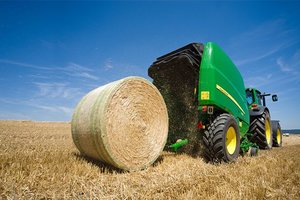On the heels of cool temperatures throughout Indiana and much of the Midwest, Purdue Extension specialists are now offering their advice on hay conservation for livestock producers. Keith Johnson, Purdue Extension forage specialist, and Ron Lemenager, Purdue Extension beef nutrition management specialist, both note that spring temperatures have been too low to generate much forage growth.
Unseasonably cold temperatures in late March and April delayed the growth of pasture grasses, according to Johnson. These grasses are typically consumed by livestock, and they have been delayed by at least two weeks.
“It is early spring and producers are tired of feeding hay to their animals,” says Johnson. “There have been reports of livestock producers running out of hay to feed. It is tempting to turn out on pasture even though the amount of growth is low yielding. It is not in the best interest of the forage to graze too early as it can set back plant growth for the entire season. The soil has also been wet and hoof action while grazing could do even more damage.”
Lemenager adds that because early season forages are high in moisture content, the rate of passage through the livestock’s gastrointestinal system has been rapid. He suggests purchasing hay from a reliable source to get by for the time being. Limiting hay feeding access time and supplementing the livestock’s diet with high-fiber is another option.
More information on hay conservation can be found by contacting the Purdue Extension at https://extension.purdue.edu/Pages/countyoffices.aspx.
